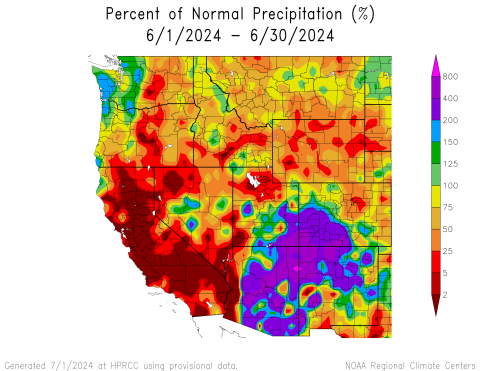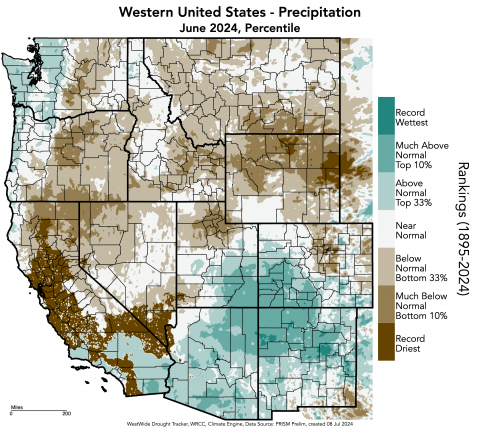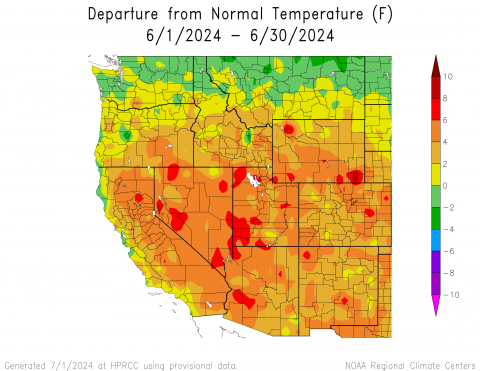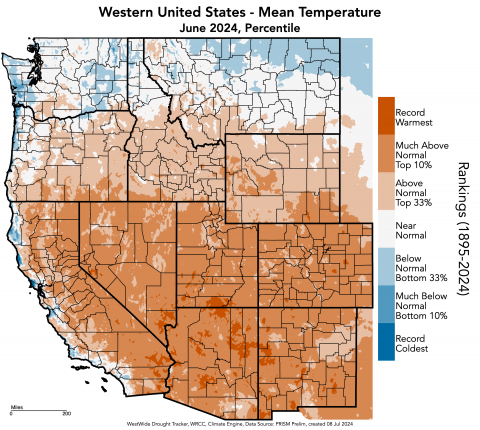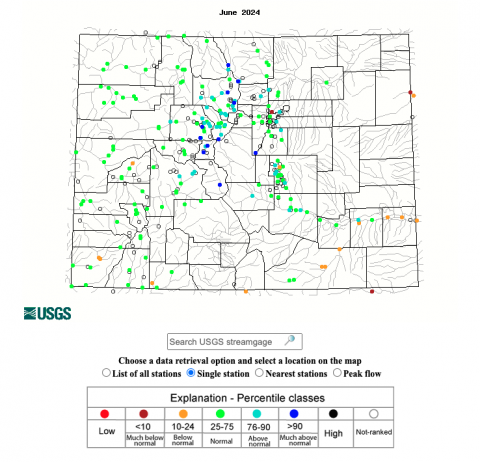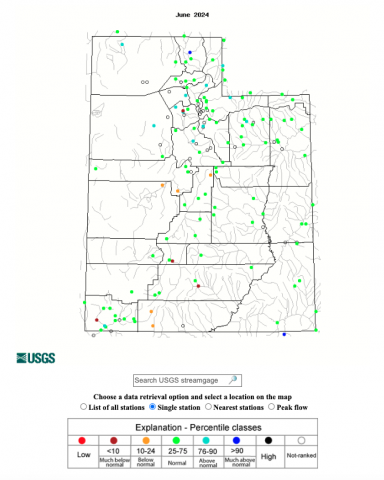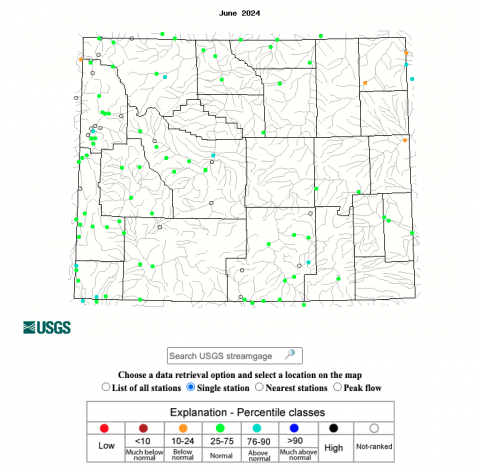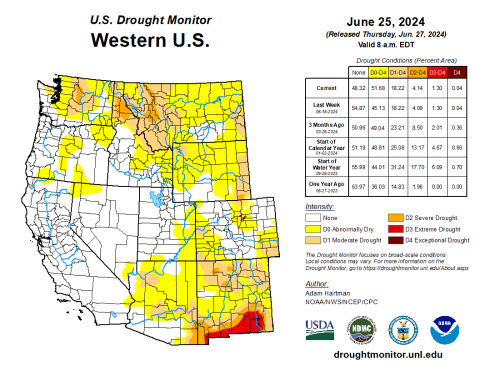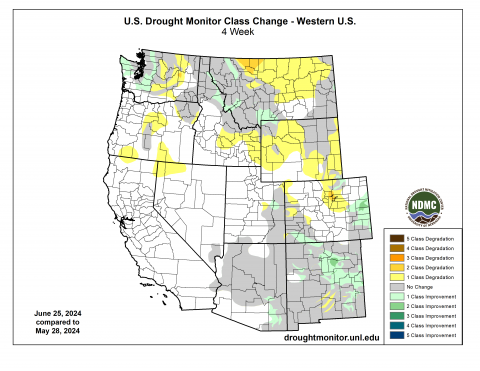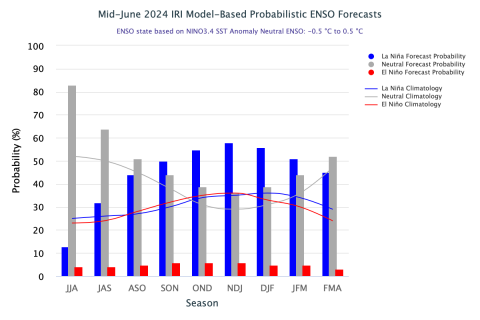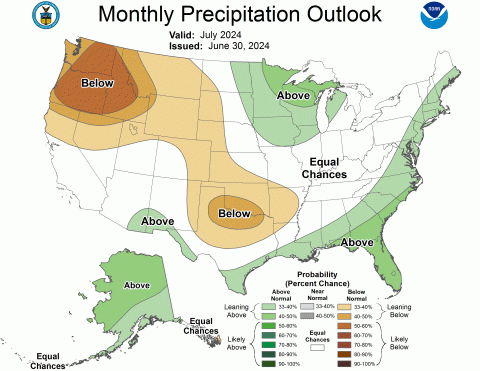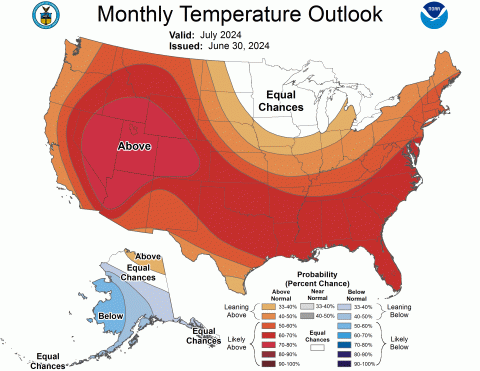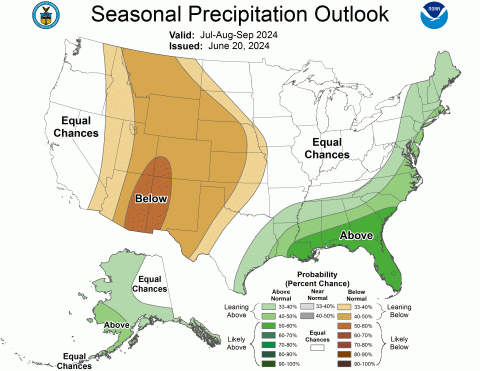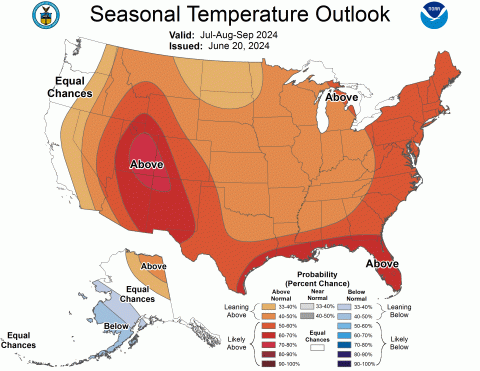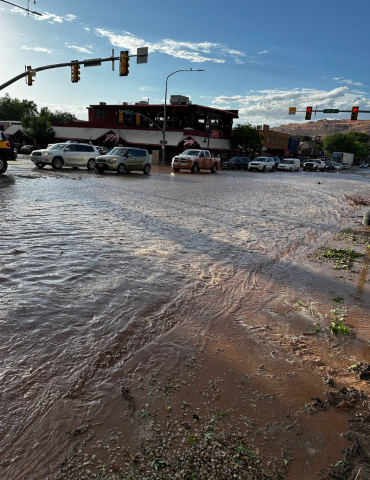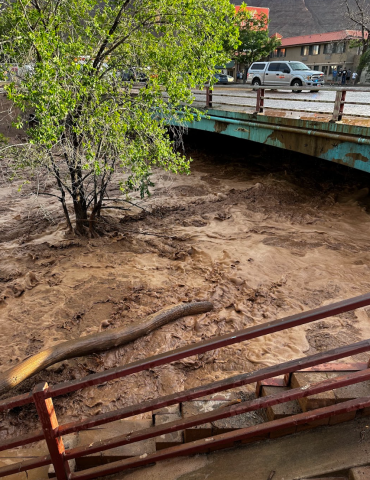July 11, 2024 - CO, UT, WY
Precipitation conditions ranged from much-below to much-above normal for the region in June. The Four Corners region experienced 400-800% of normal June precipitation while other areas of the region experienced record-dry conditions. Temperatures were above to much-above normal throughout the region in June. Snowpack completely melted out in Colorado, Utah, and Wyoming by June 23. Most regional streamflow gauges recorded normal to above normal flows. Drought conditions improved in Colorado but worsened in Wyoming. The NOAA seasonal outlook for July-September suggests an increased probability of below normal precipitation and above normal temperatures for the entire region.
The region experienced mixed conditions in June. 200-400% of average precipitation fell throughout southwestern Colorado and much of southeastern Utah, with 400-800% of normal precipitation in the Four Corners region and south-central Colorado. Large portions of the region experienced much-below average precipitation, with less than 2% of average precipitation west of the Great Salt Lake, in southwestern Utah, and in a small pocket in southwestern Wyoming. Record-dry conditions occurred in northern and eastern Wyoming, southwestern Utah, and east of Denver. Boulder experienced its driest June in exactly 100 years.
The majority of the region experienced above to much-above normal temperatures. Temperatures of 6-8°F above normal occurred in many pockets throughout the region including eastern Colorado, southern Wyoming, and particularly in northern and southwestern Utah. Temperatures of 8-10°F above normal occurred in northwestern and southeastern Wyoming. Record-warm temperatures occurred throughout the region, particularly in southern Utah.
Regional streamflow conditions were near average, with above average streamflow at many sites in northern Colorado and northern Utah. Much-above average streamflow occurred at one site near Logan, Utah and at many sites in northern Colorado along the Front Range and in the Central Mountains, from Larimer County down to Chaffee County.
Regional drought conditions worsened during June and now cover 9% of the region, compared to 8% at the end of May. Moderate (D1) drought expanded in eastern Wyoming and emerged in northern Colorado including the Denver Metro area, with severe (D2) drought emerging in Laramie County in southeastern Wyoming. D2 drought was removed from Prowers and Baca Counties in southeastern Colorado.
ENSO-neutral conditions continue in the Pacific Ocean. However, as ocean temperatures continue to cool, there is a 50% probability of La Niña conditions existing during September-November. The NOAA monthly outlook suggests an increased probability of below normal precipitation for northern Utah, eastern Colorado, and all of Wyoming, and an increased probability of above normal temperatures for the entire region, with a 70-80% chance of above normal temperatures for western and central Colorado, southwestern Wyoming, and all of Utah. The NOAA seasonal outlook for July-September suggests an increased probability of below normal precipitation, with a 50-60% chance of below normal precipitation in the Four Corners region, and it suggests an increased probability of above normal temperatures, with a 70-80% chance of above normal temperatures in the Four Corners region and the majority of eastern Utah.
Significant weather event: Flash flooding in Moab. On June 21, 2024, Moab experienced severe flash flooding due to a violent storm that drenched the region in over an inch of rain in just 15 minutes. Major roads, including Highway 191 and city streets such as 500 West, were temporarily closed due to flooding and downed power lines. Water overflowed banks and bridges and people were evacuated by authorities at places in town as a precaution to the flash flooding. In a conversation with the Moab Sun, Grand County Emergency Management Director, Cora Phillips, said she was encouraged by improvements in flood alarm systems from the historic flooding in August 2022, but that more work needs to be done. According to Moab City Manager, David Everitt, this flash flood could leave years of repair work, as he says the city is still doing repairs from the aforementioned floods in 2022.
Photos by Jason Strother, Moab Sun News.
